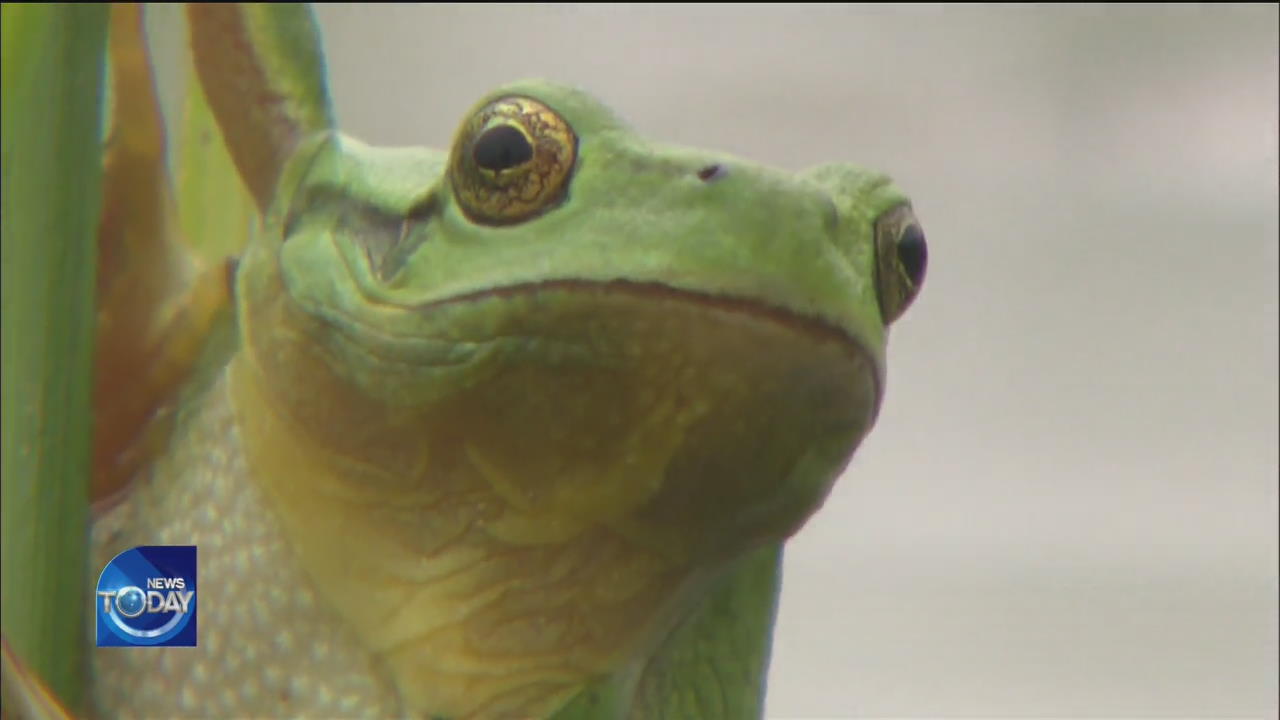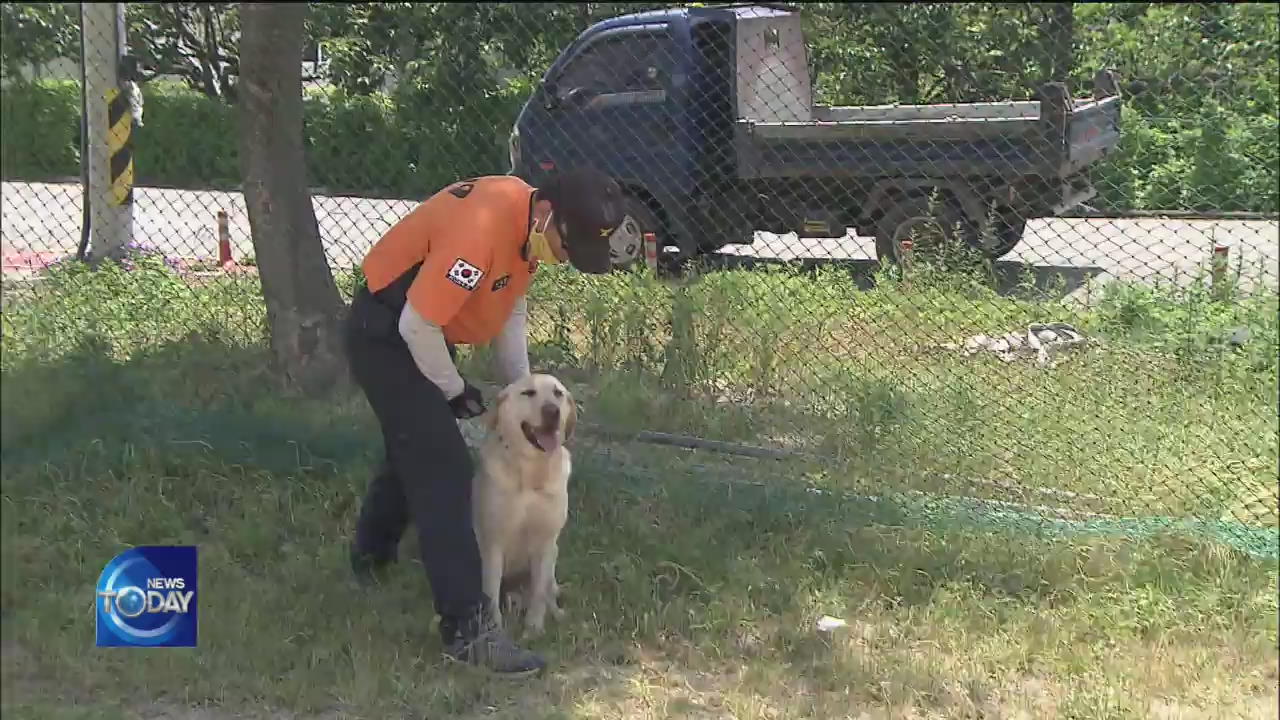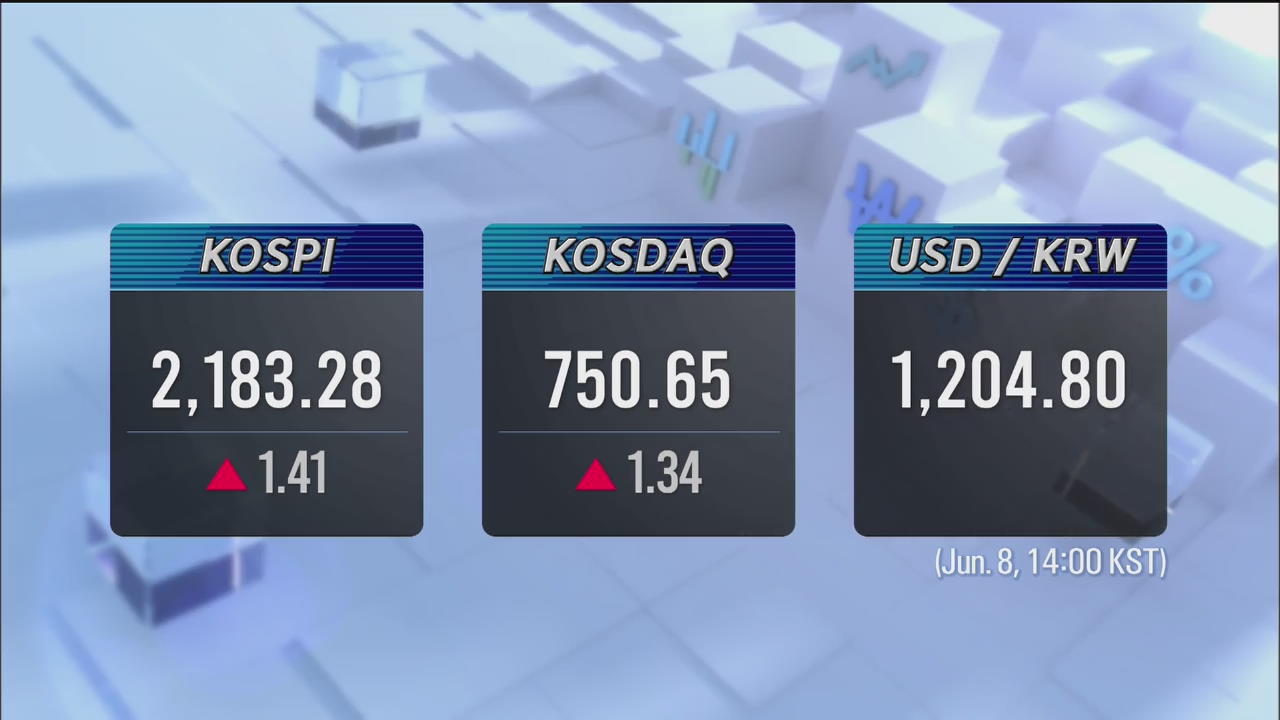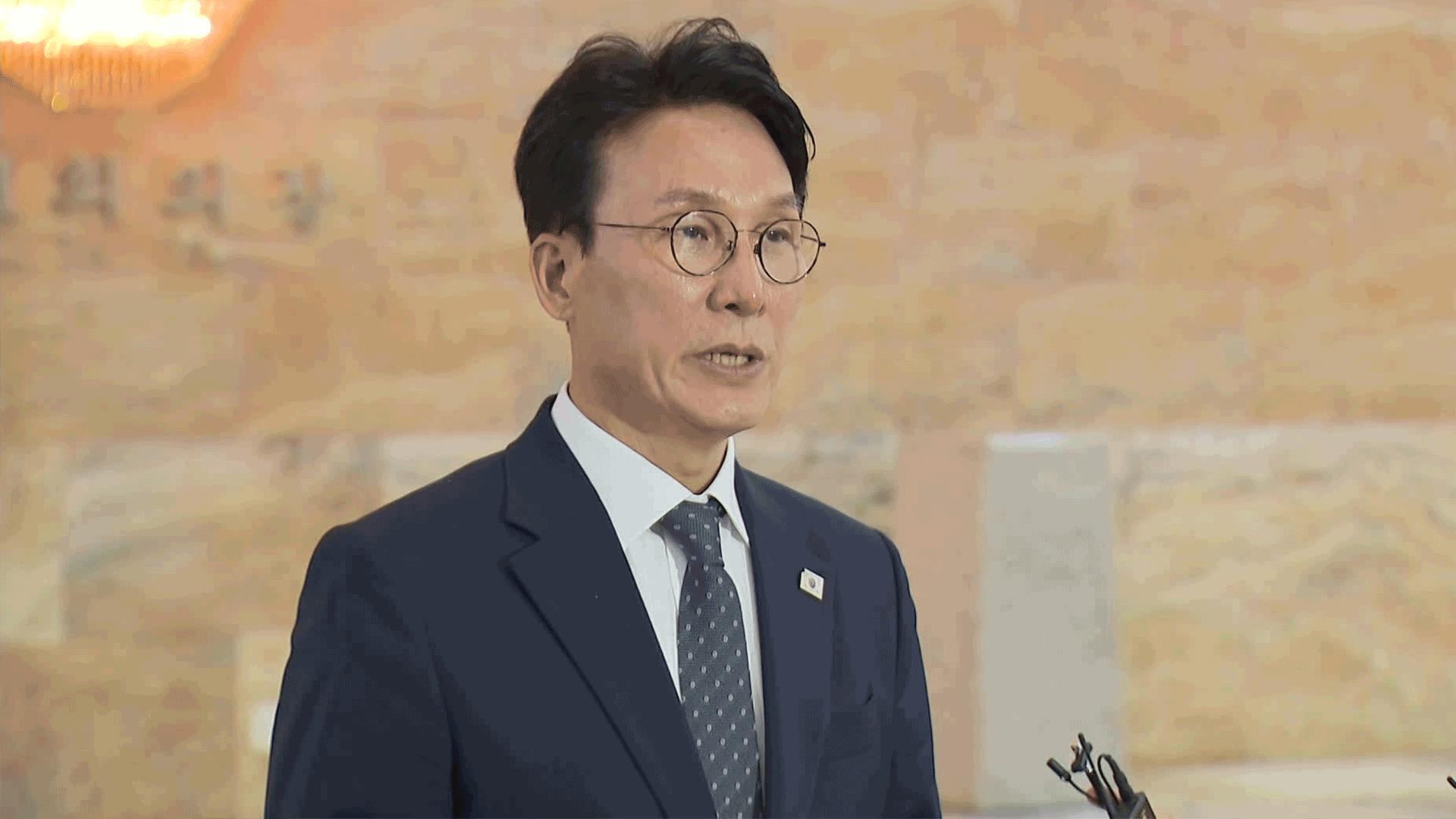FARMING METHOD TO PROTECT ENDANGERED FROGS
입력 2020.06.08 (15:09)
수정 2020.06.08 (16:48)
읽어주기 기능은 크롬기반의
브라우저에서만 사용하실 수 있습니다.
[Anchor Lead]
Suwon green frogs are an endangered frog native to Korea and are named after Suwon city in Gyeonggi-do Province. But with their numbers decreasing, local farmers are using an organic farming method to preserve the natural habitat of the frogs. Let's find out what they are.
[Pkg]
A small green body with a bulging vocal sac... Measuring between 2.5 centimeters and four centimeters long, this is the smallest species of frog living in Korea. It is distinguished from ordinary green frogs by its unique cry. While ordinary green frogs produce low-pitched sounds at short intervals, Suwon green frogs cry in a high tone with longer gaps. The indigenous green frog was first found in a rice field in Suwon in 1977. This is why it was named Suwon green frog. However, their numbers have sharply decreased due to deteriorating living conditions. In 2012, Suwon green frogs became the first amphibian to be included in the endangered animals of category 1. An eco-friendly farming method using freshwater snails are used in rice fields where the frogs live. Freshwater snails eat weeds across the fields and therefore, are regarded as a good alternative to herbicides.
[Soundbite] RYU HYUN-SANG(SUWON ENVIRONMENT MOVEMENT CENTER) : "Herbicide is sprinkled to kill growing weeds after planting rice seedlings. Weedkiller has environmental problems and freshwater snails are used instead."
Organic compost, such as rice bran, is used, instead of chemical fertilizer.
[Soundbite] KIM DEOK-NYONG(SUWON CITY GOV'T) : "Suwon green frogs are sensitive to the environment, compared to other species of frogs. Their existence indicate that the environment are ecologically clean."
The Suwon city government will compensate farmers for the production loss resulting from the organic farming.
Suwon green frogs are an endangered frog native to Korea and are named after Suwon city in Gyeonggi-do Province. But with their numbers decreasing, local farmers are using an organic farming method to preserve the natural habitat of the frogs. Let's find out what they are.
[Pkg]
A small green body with a bulging vocal sac... Measuring between 2.5 centimeters and four centimeters long, this is the smallest species of frog living in Korea. It is distinguished from ordinary green frogs by its unique cry. While ordinary green frogs produce low-pitched sounds at short intervals, Suwon green frogs cry in a high tone with longer gaps. The indigenous green frog was first found in a rice field in Suwon in 1977. This is why it was named Suwon green frog. However, their numbers have sharply decreased due to deteriorating living conditions. In 2012, Suwon green frogs became the first amphibian to be included in the endangered animals of category 1. An eco-friendly farming method using freshwater snails are used in rice fields where the frogs live. Freshwater snails eat weeds across the fields and therefore, are regarded as a good alternative to herbicides.
[Soundbite] RYU HYUN-SANG(SUWON ENVIRONMENT MOVEMENT CENTER) : "Herbicide is sprinkled to kill growing weeds after planting rice seedlings. Weedkiller has environmental problems and freshwater snails are used instead."
Organic compost, such as rice bran, is used, instead of chemical fertilizer.
[Soundbite] KIM DEOK-NYONG(SUWON CITY GOV'T) : "Suwon green frogs are sensitive to the environment, compared to other species of frogs. Their existence indicate that the environment are ecologically clean."
The Suwon city government will compensate farmers for the production loss resulting from the organic farming.
■ 제보하기
▷ 카카오톡 : 'KBS제보' 검색, 채널 추가
▷ 전화 : 02-781-1234, 4444
▷ 이메일 : kbs1234@kbs.co.kr
▷ 유튜브, 네이버, 카카오에서도 KBS뉴스를 구독해주세요!
- FARMING METHOD TO PROTECT ENDANGERED FROGS
-
- 입력 2020-06-08 15:11:20
- 수정2020-06-08 16:48:08

[Anchor Lead]
Suwon green frogs are an endangered frog native to Korea and are named after Suwon city in Gyeonggi-do Province. But with their numbers decreasing, local farmers are using an organic farming method to preserve the natural habitat of the frogs. Let's find out what they are.
[Pkg]
A small green body with a bulging vocal sac... Measuring between 2.5 centimeters and four centimeters long, this is the smallest species of frog living in Korea. It is distinguished from ordinary green frogs by its unique cry. While ordinary green frogs produce low-pitched sounds at short intervals, Suwon green frogs cry in a high tone with longer gaps. The indigenous green frog was first found in a rice field in Suwon in 1977. This is why it was named Suwon green frog. However, their numbers have sharply decreased due to deteriorating living conditions. In 2012, Suwon green frogs became the first amphibian to be included in the endangered animals of category 1. An eco-friendly farming method using freshwater snails are used in rice fields where the frogs live. Freshwater snails eat weeds across the fields and therefore, are regarded as a good alternative to herbicides.
[Soundbite] RYU HYUN-SANG(SUWON ENVIRONMENT MOVEMENT CENTER) : "Herbicide is sprinkled to kill growing weeds after planting rice seedlings. Weedkiller has environmental problems and freshwater snails are used instead."
Organic compost, such as rice bran, is used, instead of chemical fertilizer.
[Soundbite] KIM DEOK-NYONG(SUWON CITY GOV'T) : "Suwon green frogs are sensitive to the environment, compared to other species of frogs. Their existence indicate that the environment are ecologically clean."
The Suwon city government will compensate farmers for the production loss resulting from the organic farming.
Suwon green frogs are an endangered frog native to Korea and are named after Suwon city in Gyeonggi-do Province. But with their numbers decreasing, local farmers are using an organic farming method to preserve the natural habitat of the frogs. Let's find out what they are.
[Pkg]
A small green body with a bulging vocal sac... Measuring between 2.5 centimeters and four centimeters long, this is the smallest species of frog living in Korea. It is distinguished from ordinary green frogs by its unique cry. While ordinary green frogs produce low-pitched sounds at short intervals, Suwon green frogs cry in a high tone with longer gaps. The indigenous green frog was first found in a rice field in Suwon in 1977. This is why it was named Suwon green frog. However, their numbers have sharply decreased due to deteriorating living conditions. In 2012, Suwon green frogs became the first amphibian to be included in the endangered animals of category 1. An eco-friendly farming method using freshwater snails are used in rice fields where the frogs live. Freshwater snails eat weeds across the fields and therefore, are regarded as a good alternative to herbicides.
[Soundbite] RYU HYUN-SANG(SUWON ENVIRONMENT MOVEMENT CENTER) : "Herbicide is sprinkled to kill growing weeds after planting rice seedlings. Weedkiller has environmental problems and freshwater snails are used instead."
Organic compost, such as rice bran, is used, instead of chemical fertilizer.
[Soundbite] KIM DEOK-NYONG(SUWON CITY GOV'T) : "Suwon green frogs are sensitive to the environment, compared to other species of frogs. Their existence indicate that the environment are ecologically clean."
The Suwon city government will compensate farmers for the production loss resulting from the organic farming.
이 기사가 좋으셨다면
-
좋아요
0
-
응원해요
0
-
후속 원해요
0













![[단독] 도이치 주포 “김건희, 내 덕에 떼돈 벌어…22억 원 주문”](/data/news/2025/07/03/20250703_KpuU43.png)
![[단독] “쪽지 얼핏 봤다, 안 받았다”더니…CCTV에선 문건 챙긴 이상민](/data/news/2025/07/03/20250703_Lv3LjI.png)


이 기사에 대한 의견을 남겨주세요.